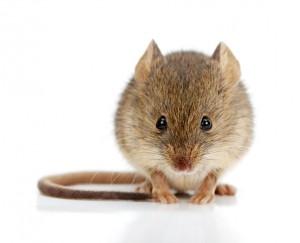Mouse Control Information
Description
Mice
House Mouse
 The house mouse is small, slender and weighs only about 0.4 to one ounce. It has a pointed snout, large ears with hair, and its fur is anywhere from grey to light brown or dark brown on top, light brown (now white) on the underside, with scales showing on its tail. It can be found throughout Canada.
The house mouse is small, slender and weighs only about 0.4 to one ounce. It has a pointed snout, large ears with hair, and its fur is anywhere from grey to light brown or dark brown on top, light brown (now white) on the underside, with scales showing on its tail. It can be found throughout Canada.
Rodents spread disease, damage structures and contaminate food and feed. Rodents damage one-fifth of the world’s food crop each year. One pair of rats shed more than one million body hairs each year and a single rat leaves approximately 25000 droppings in a year.
Rodents Transmit Murine typhus fever, rat bite fever, salmonella or bacterial food poisoning, wells disease or leptospirosis and trichinosis, melioidosis, brucellosis, tuberculosis, pasteurellosis, rickettsial diseases, and viral diseases such as foot-and-mouth disease. Norway rats can also carry the rabies virus.
Primarily nocturnal in habit and they are very cautious. They constantly explore their surroundings, particularity at night, and they shy away from new objects and changes. They will eat practically anything, but they prefer fruits, vegetables, fruit, and cereals. Once they find an acceptable/preferred food, they may make a home and even begin to breed. Most of the time if you see one mouse, chances are there are more. Rats tend to eat their fill at one sitting and will return time after time.
More Information and Tips on Mice Control:
- Scratching noises in walls at night may be an indication of mice
- Other signs include signs or chewing or damaged food packaging
- Prolific breeders that if ignored will lead to a severe infestation
- Mice carry disease - use caution around urine or droppings
- Wear gloves and a dust mask during clean up or when disposing of dead rodents
- Use a damp paper towel to clean up droppings - Never vacuum or sweep - the dust raised can cause illness
- Wash your hands thoroughly when done
- Mice are attracted to areas where they can find food, water, and shelter
- Can enter the home through an opening the size of a dime and can flatten themselves to get in
- Prevention is the key to controlling rodents
- Our locked Bait boxes combined with monthly visits will control, not eliminate the problem
- Locked Bait boxes are safe for children and pets
- Mice will eat the bait and leave in search of water and then die
- Minimum 3-month commitment but should continue as long as there is an activity
- When under control, points of entry must be repaired to eliminate the problem
- Due to the nature of some buildings, this may need to be a continuous year-long service
Details
| Date Added | 2018-05-09 |
| Product Id | 10428819 |






